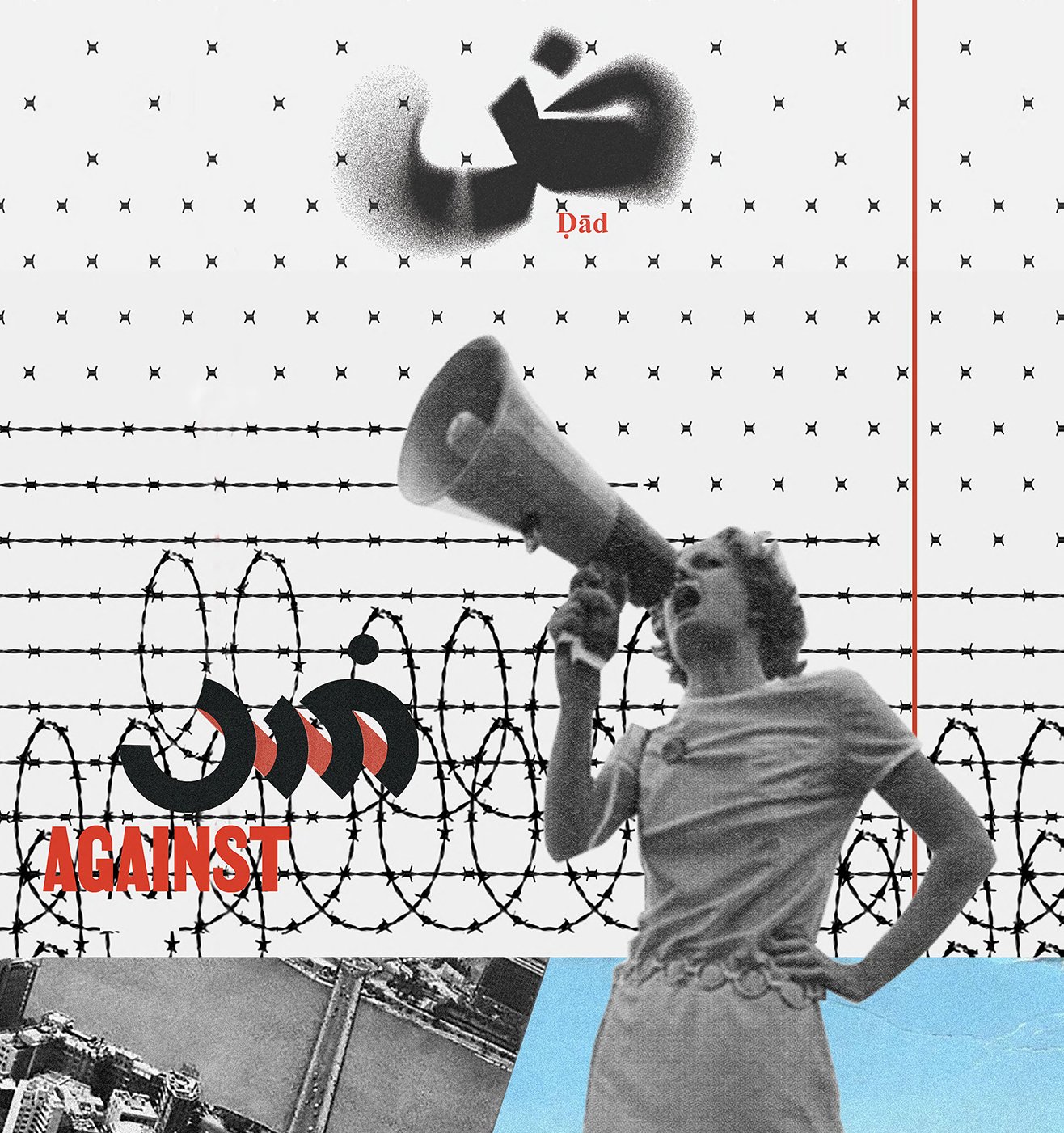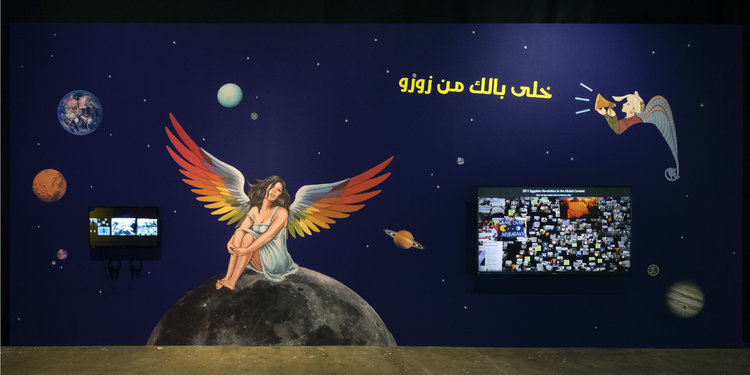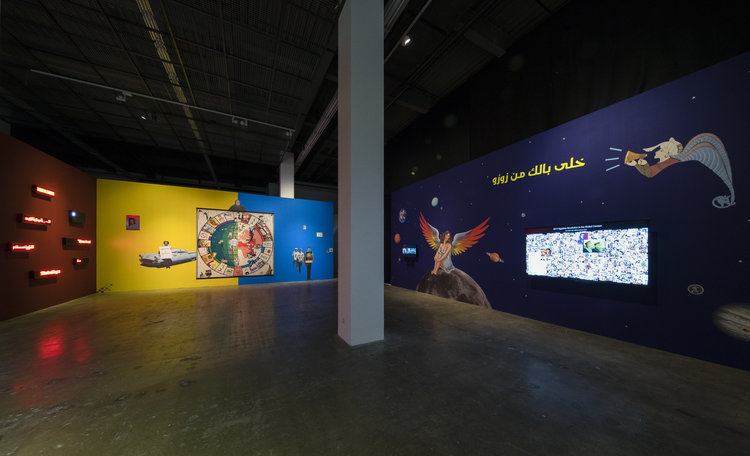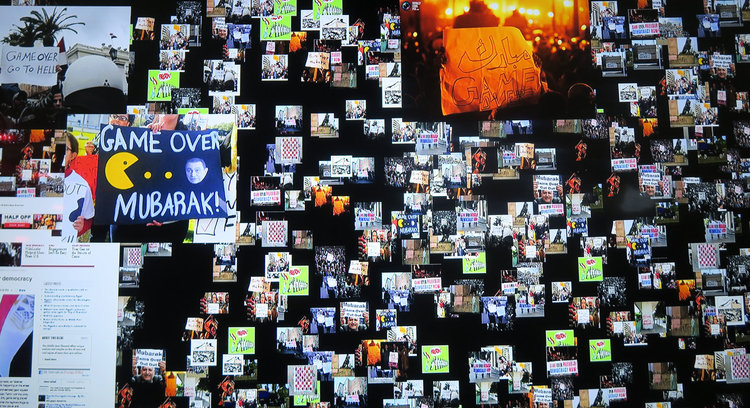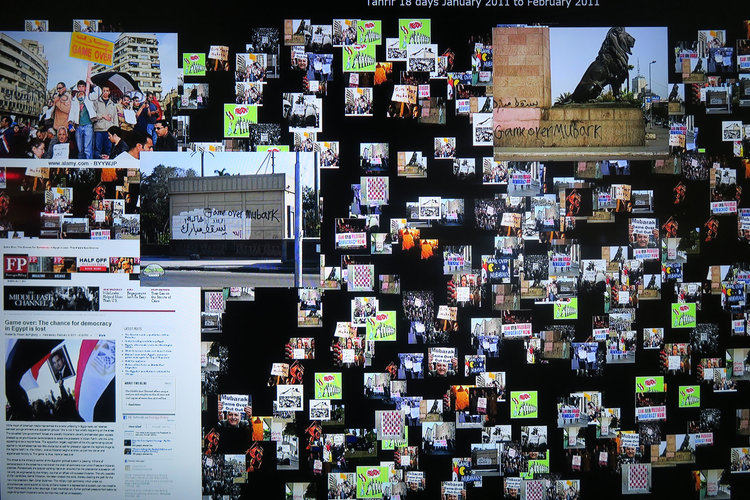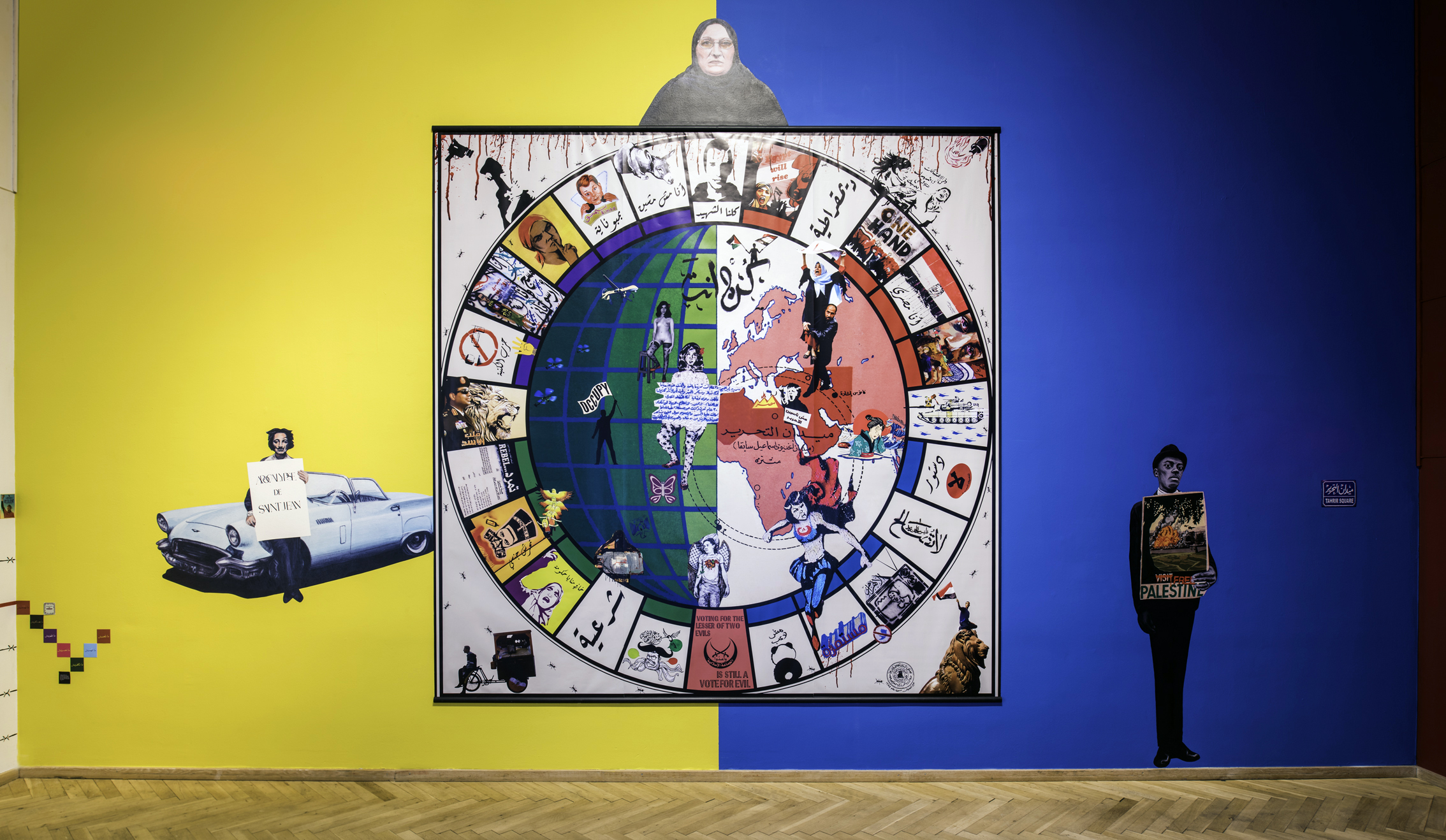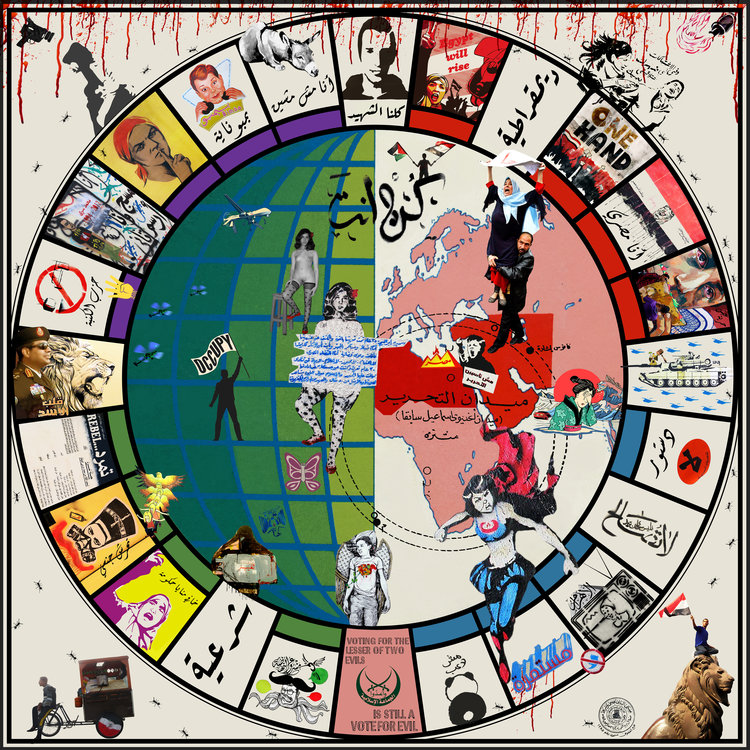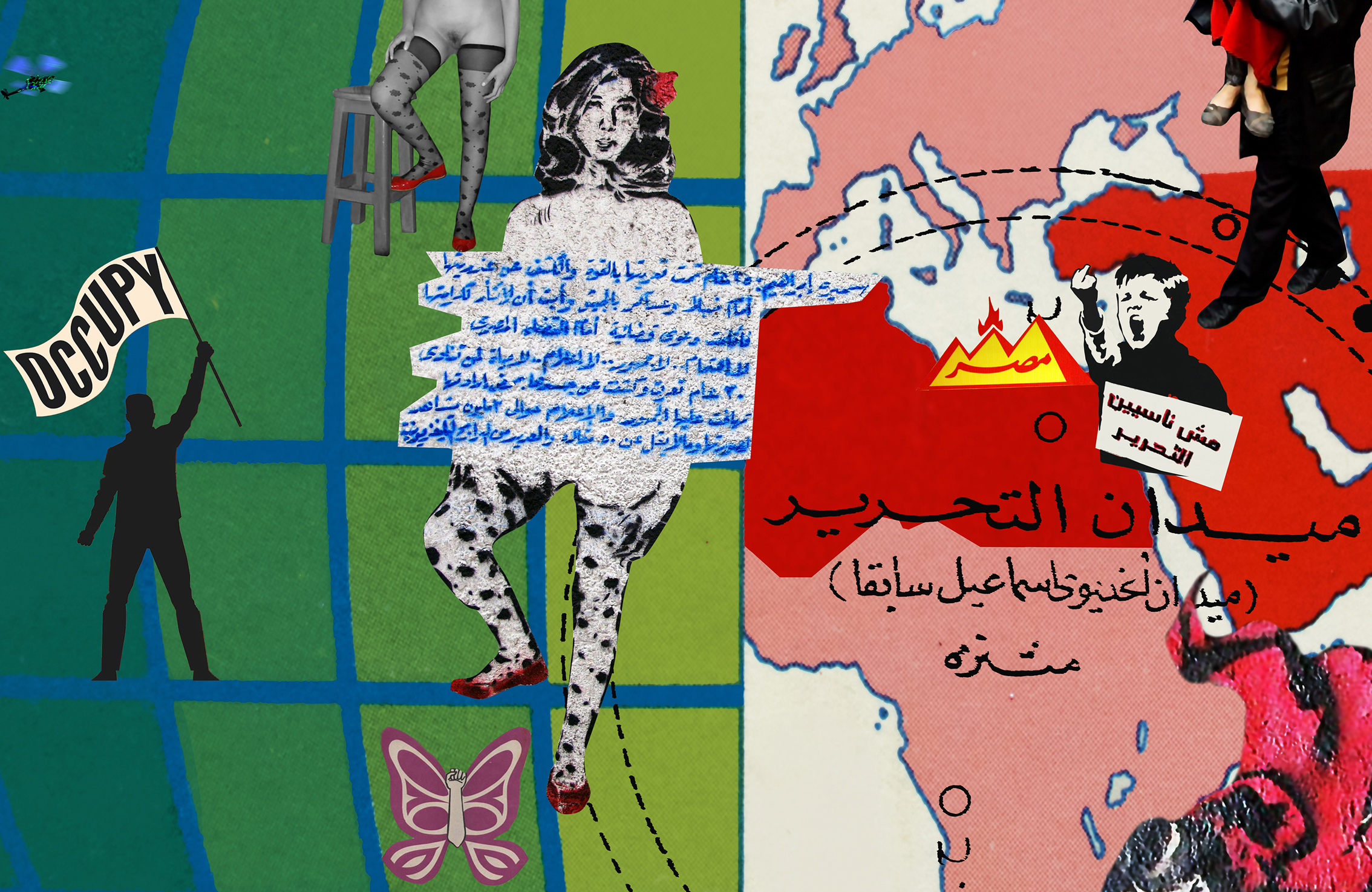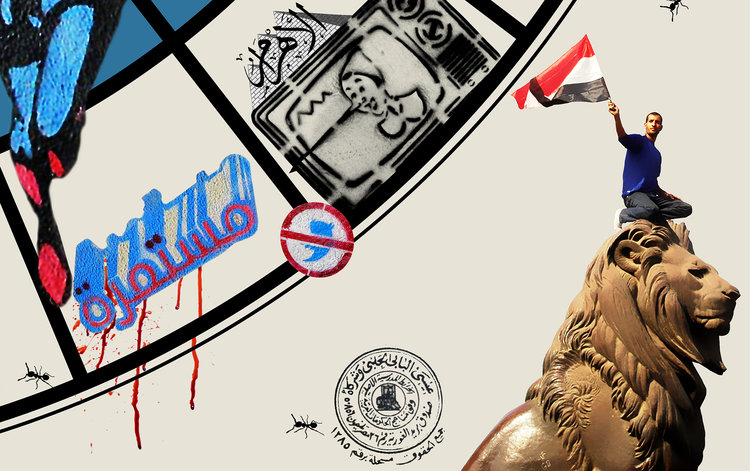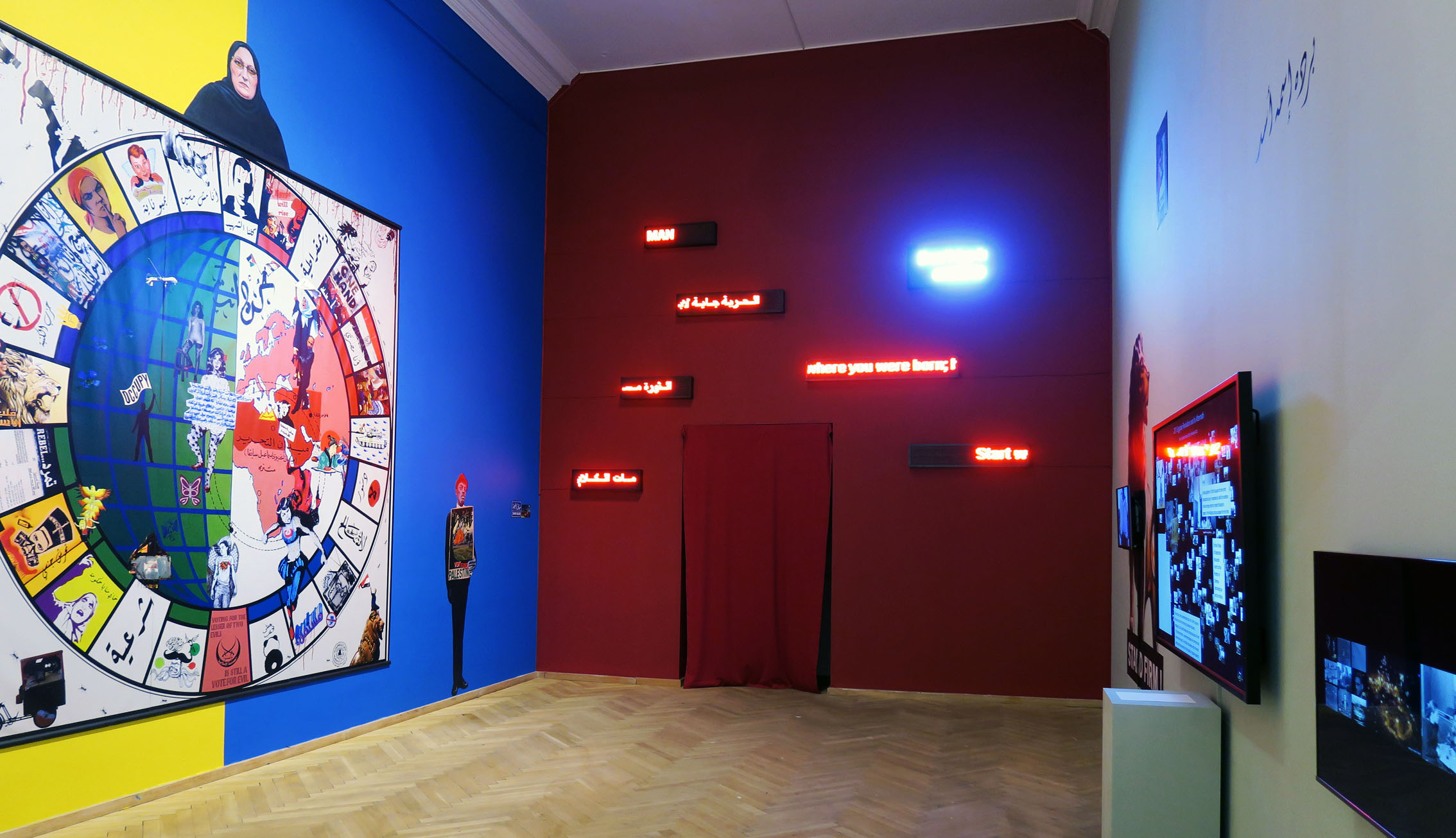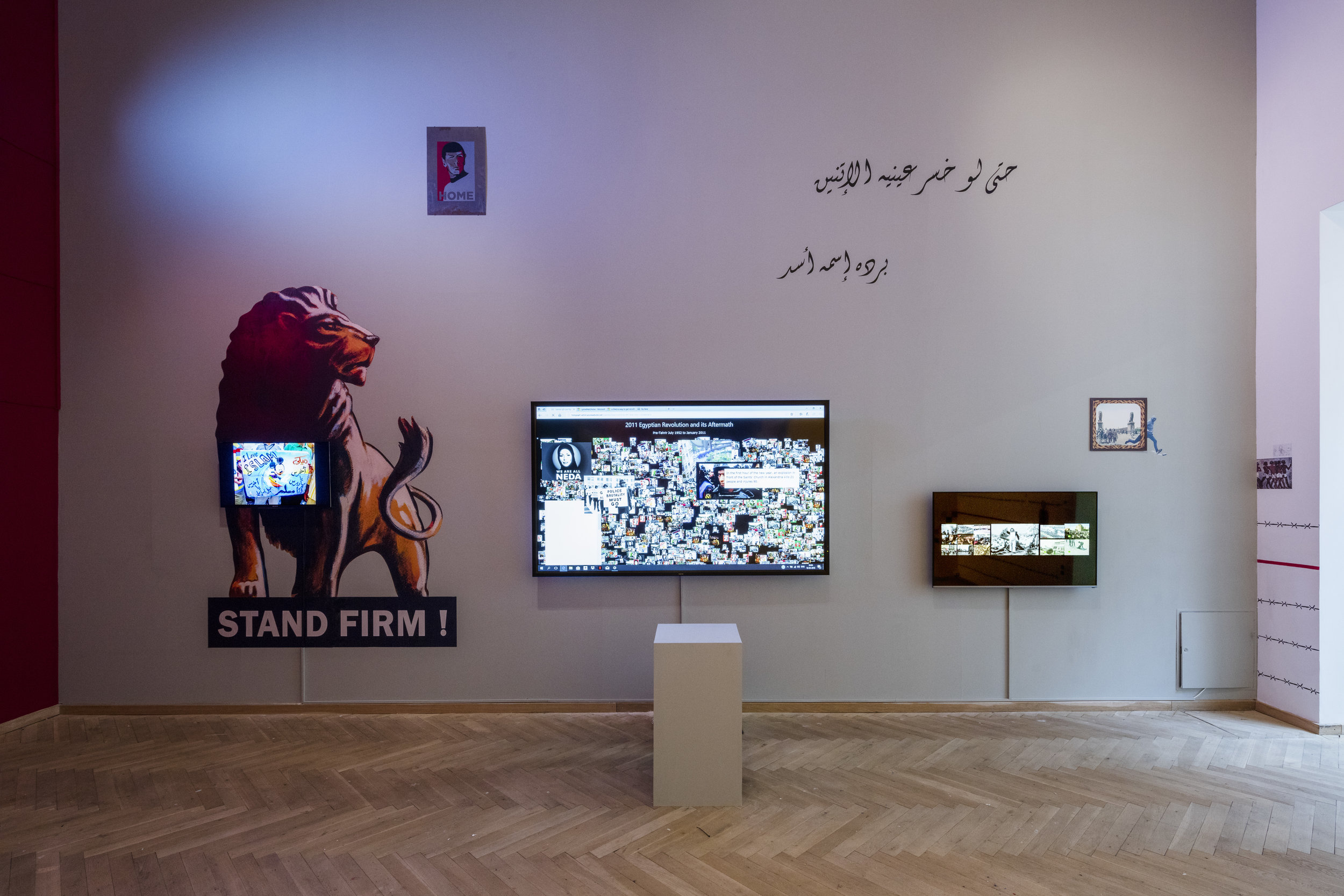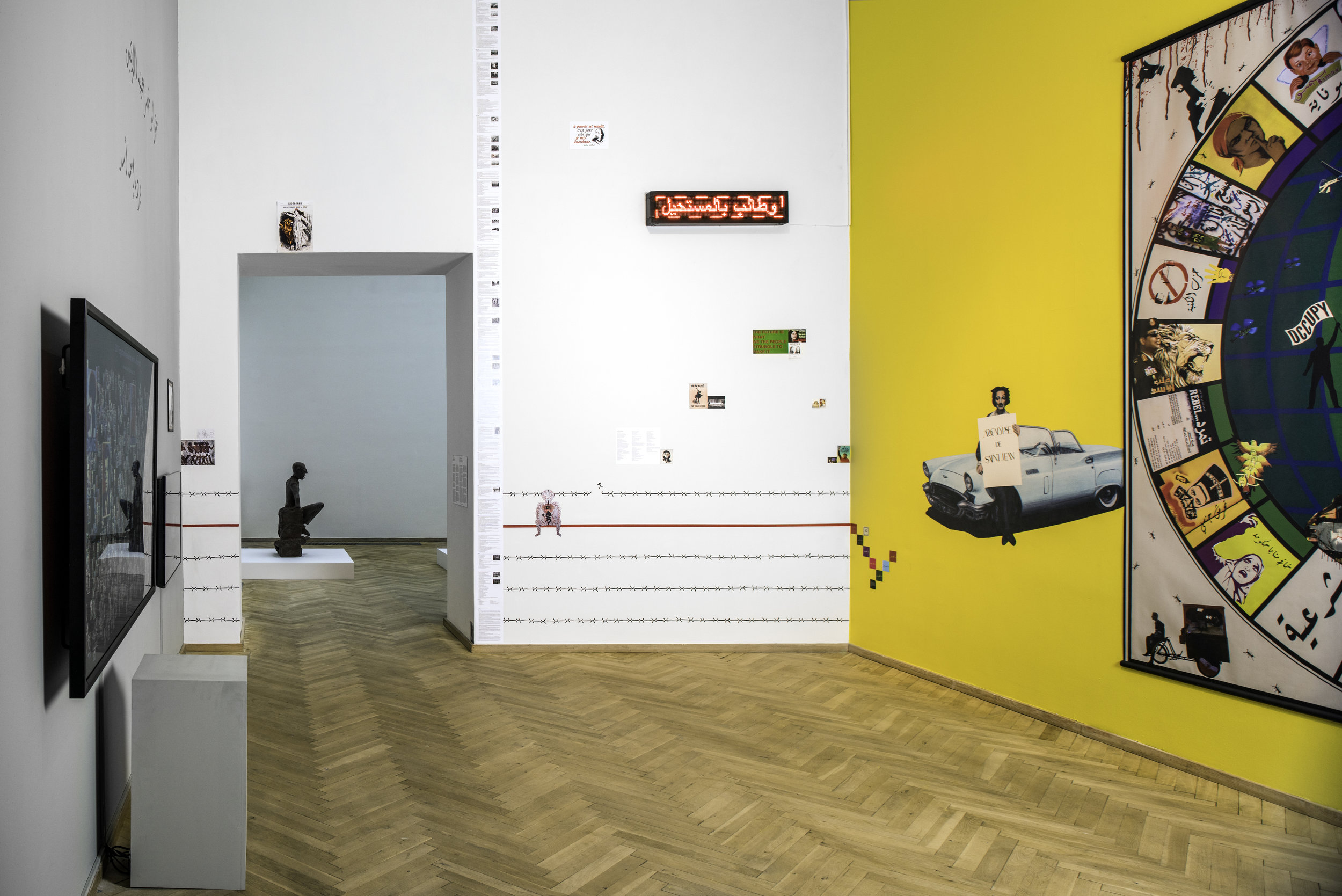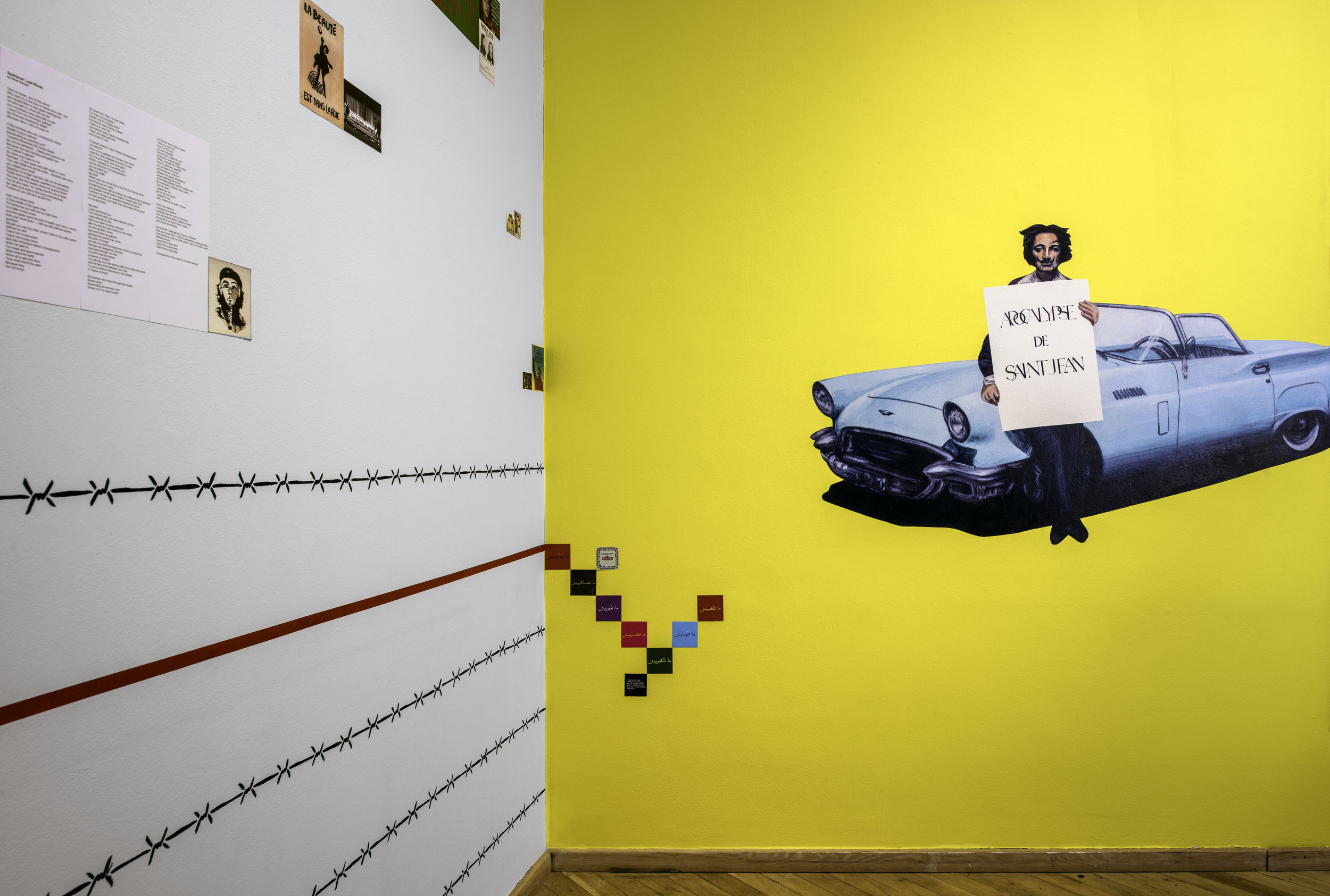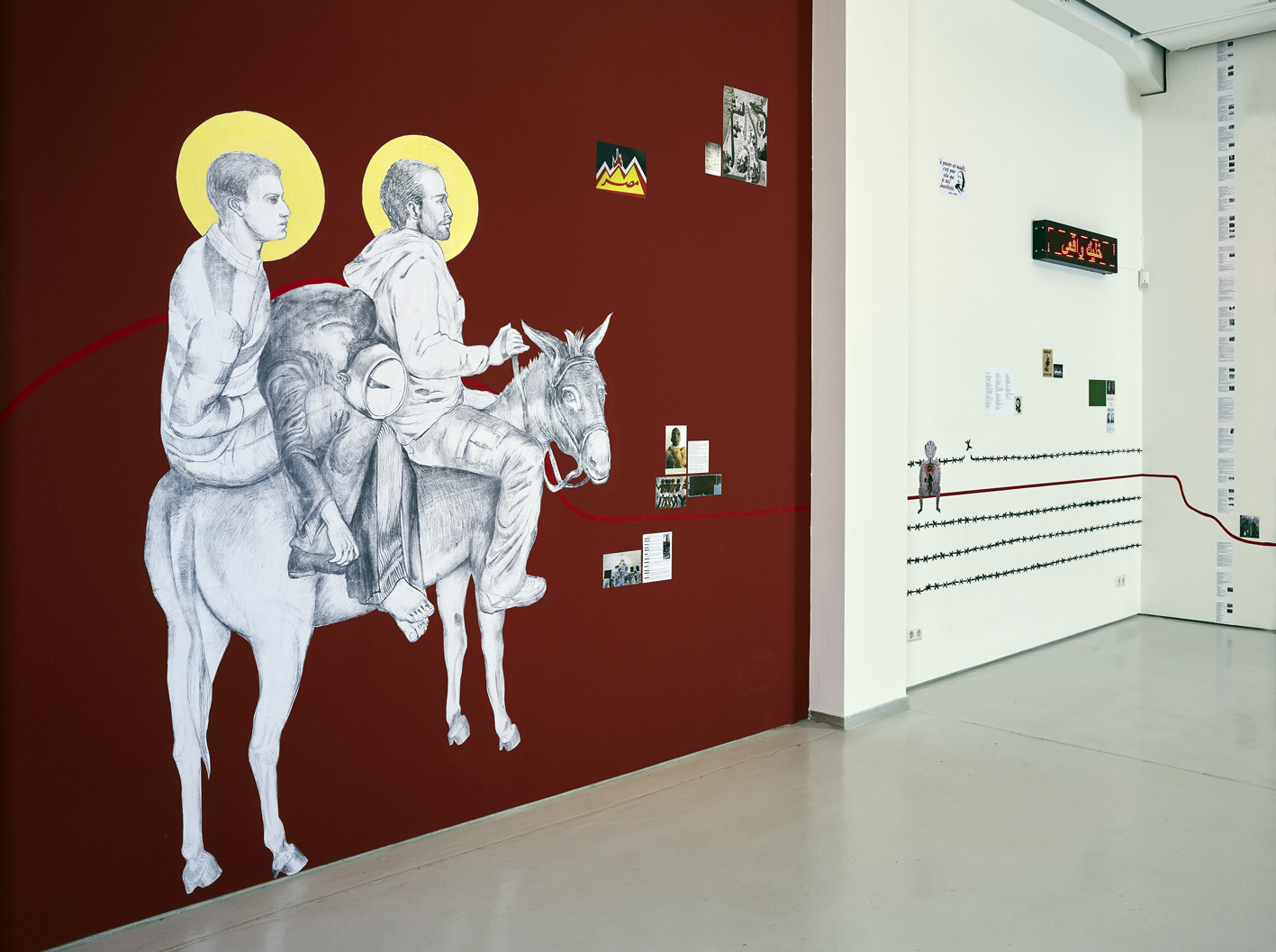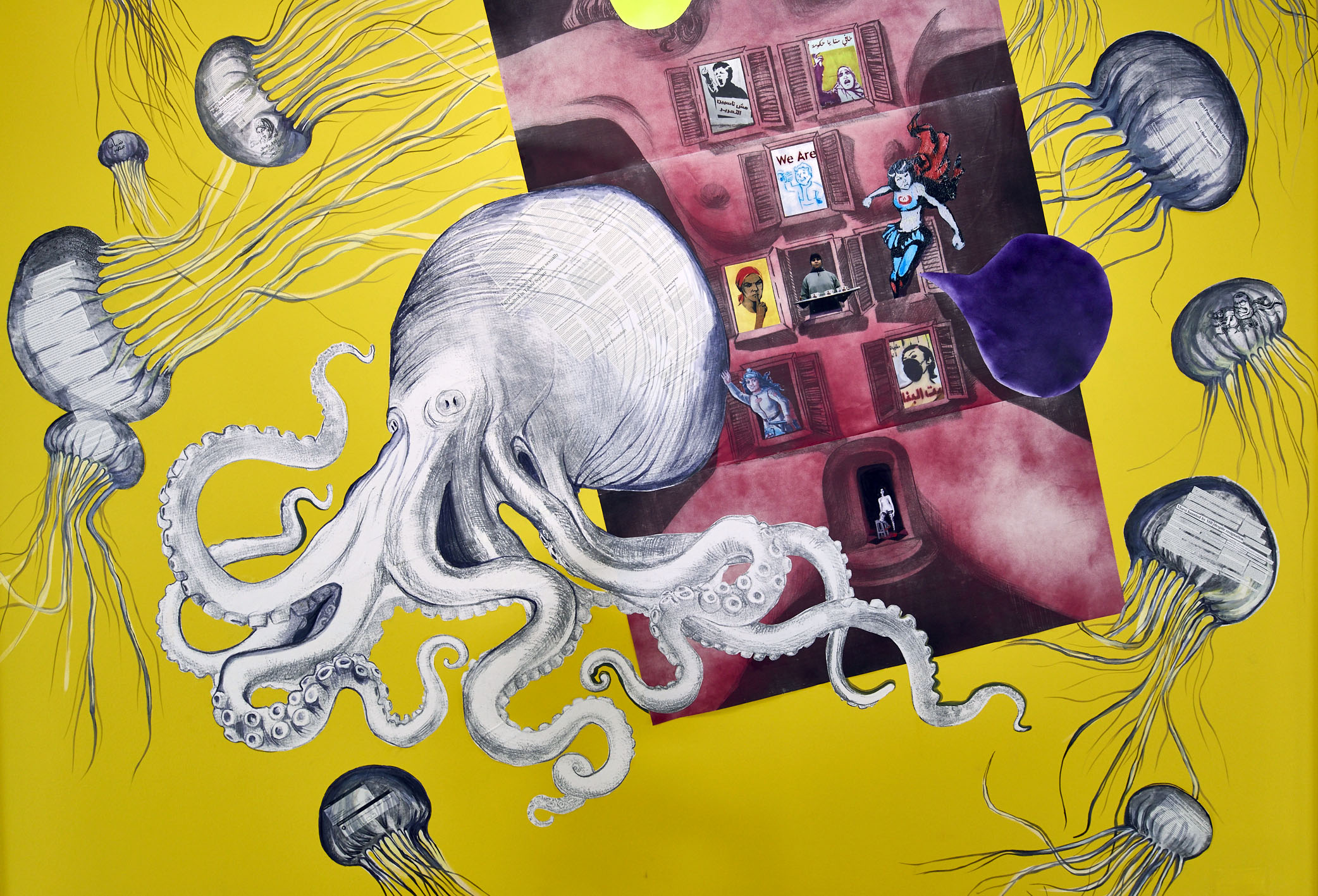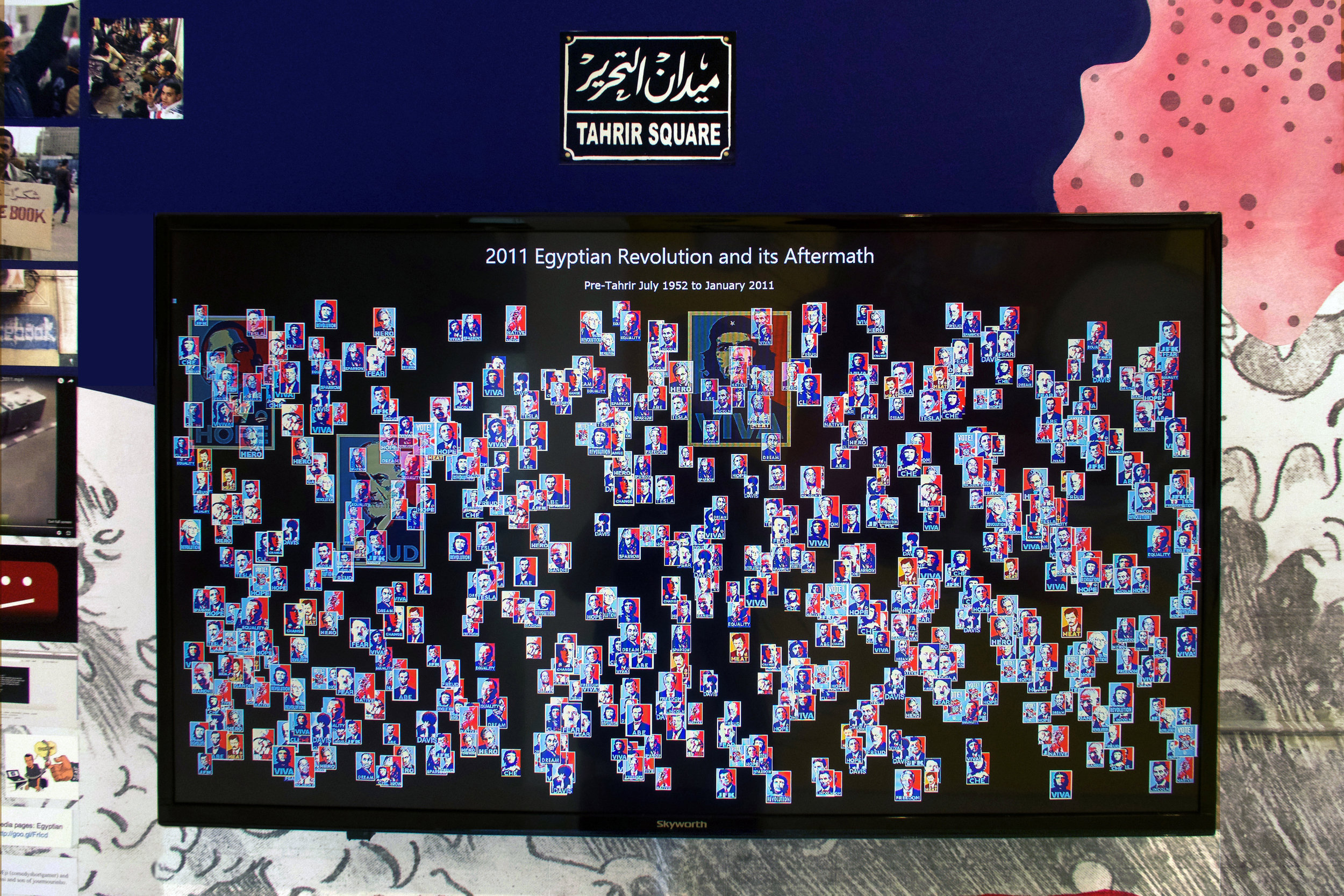ANATOMY OF REVOLUTION
An online interactive archive, lexicon and iconography of revolts and protests — UPCOMING JUNE 2023
Anatomy of Revolution is an interactive web-based ‘lesson in History’ in the form of an online abécédaire (ABC).
Anatomy of Revolution is an ABC of terms related to revolts and social movements. It is an interactive web-based ‘platform to be launched mid 2023. The project will mark a decade of unprecedented number of social global movements. Anatomy of Revolution is at once an artistic and educational project: a lesson in history which draws inspiration from the 2011 events in Tahrir Square and from researching and archiving data on past and present global protests. The project is the last of a series of artworks which stem from the ongoing project, Tahrir Archives—ongoing since 2011.
In Arabic and English, the artistic narrative unfolds across interconnected webpages. The visual language is inspired by (and turns on their head), the language of propagandist educational tools. Each word is an assemblage / collage of data: photos, excerpts from literature, poetry, articles, quotes or references from popular visual culture. The ABC is punctuated by analogies between historical artworks and photographs and/or iconography of protest. Anatomy of Revolution is an analysis of the mechanisms inherent in revolutions through the study of the visual representation of History.
Anatomy of Revolution dissects the cycle inherent to revolutions across time and cultures while a reflection on the present—it highlights recent protests and anti-racism/Black Lives Matter protests which took place globally— it is a visually accessible educational tool.
VOX POPULI, ARCHIVING A REVOLUTION IN THE DIGITAL AGE
OPEN SOURCE ARCHIVE / Timeline
Vox Populi is a web-based participatory timeline of the 2011 Egyptian revolution and its aftermath. Positioned at the intersection of digital archives, innovative forms of interactive documentary and contemporary art, this online platform is at once an artwork—a ‘transmedia’ collage—and an open source portal into archives related to Tahrir Square and many more global social movements.
The Vox Populi database is now online. The archive is exhibited in the form of a video installation in museums, biennials and other art spaces is central to a series of artworks performing the archive and addressing Tahrir Square in the global context. The interface is currently in progress.
Vox Populi, Archiving a Revolution in the Digital Age. Web based open source archive. Ongoing since 2011. Gwangju Biennial, South Korea, 2018. © Lara Baladi.
The Game. Design for the interface of the Vox Populi timeline. Digital montage. Exhibition size 125X125 inches. Dimensions variable. 2018. © Lara Baladi.
Tahrir Square stands as one of our most digitally documented and disseminated event in modern history. It has become the archetype of a global phenomenon that has marked the beginning of the 21st century.
Vox Populi, Archiving a Revolution in the Digital Age, is an interactive timeline of the Egyptian revolution and its aftermath. It is a tribute to the 2011 Egyptian revolution and its impact on and resonance with the uprisings and socio-political movements that followed, and continue to do so worldwide.
It is a multilayered and mutable narrative in which the data and metadata are interlinked and displayed across a chronological timeline of global events. Digital archives related to the 2011 Arab uprisings and other global protests—Youtube videos, photos, graffiti, articles and further data—converge into a contemporary fresco, a monument to the symbolic event that was, and still is, Tahrir Square.
This literal transmedia painting tableau vivant is positioned at the intersection of digital archives, innovative forms of interactive documentary and contemporary art.
Ultimately, Vox Populi offers an architectural frame for the many historical events and socio-political movements that resonate with the name Tahrir Square.
WATCH OUT FOR ZUZU
MULTIMEDIA INSTALLATION
Watch Out for Zuzu weaves historic correlations between the Arab uprisings and other global social movements through a wide range of iconic and archetypal images, videos, articles, and more. The third of a series of four installations, the installation focuses on the notion of exile at large—from prisoners, death toll, disappeared, political refugees to political assassinations in the current post-revolution status quo.
READ MORE
Watch Out for Zuzu. Site Specific multimedia installation. LED tickers, murals—paintings by Eric Busch, video installations, web based open source Vox Populi database/timeline. Installation views. Imagined Borders, Gwangju Biennial, co-curated by Christine Y. Kim and Rita Gonzalez. © Lara Baladi, 2018.
DON'T BE TOO CANDID
MULTIMEDIA INSTALLATION
Don't Be Too Candid weaves historic correlations between the Arab uprisings and other global social movements through a wide range of iconic and archetypal images, videos, poetry, articles and more data. The multimedia installation focuses on the present post revolution context and the shift of power (represented by the lion) from the state to the protester and back to the state.
READ MORE
Don't Be Too Candid. Site Specific multimedia installation. LED tickers, murals—paintings by Eric Busch, video installations, web based open source Vox Populi database/timeline. Installation views. #WhatIf, Kunsthal Charlottenborg, Copenhagen, Denmark. Photos by Karim Hanna and Lara Baladi © Lara Baladi, 2018.
ABOUT DON'T BE TOO CANDID
I Revolutiones Mave, Weekendavisen Kultur, by Pernille Albrechtsen, March 2018
#WhatIf, Kunsthal Charlottenborg, Copenhagen — Intervista a Irene Campolmi, by Giulia Morrucchio, May 2018
Kunst er Ikke SoMe, Informationen, by Ida Marie Hede, March 2018
Dokumentariske Utopier For an Grumset Verden, by Kristian Handberg, March 2018
Lidt Kunsth - Meget Politik, Berlinske, by Torben Weirup, March 2018
Vox Populi, Archiving a Revolution in the Digital Age. Web based open source archive. Ongoing since 2011. Still, 2017. © Lara Baladi.
BE REALISTIC, ASK FOR THE IMPOSSIBLE
MULTIMEDIA INSTALLATION
Be Realistic, Ask for the Impossible is anchored in the 2011 Egyptian Revolution and its aftermath. The multimedia installation displays a timeline of events from the first recorded strike in Egypt before Christ until today. The work weaves historic correlations between the Arab uprisings and other global social movements through a wide range of iconic and archetypal images, videos, poetry, articles and more data.
Be Realistic, Ask for the Impossible, Multimedia installation. LED ticker, video installations, murals and the Vox Populi web based archive/timeline. Installation views, Affect Me. Social Media In Art, KAI10 | Arthena Foundation, Dusseldorf, Germany, 2017. © Lara Baladi.
ABOUT BE REALISTIC, ASK FOR THE IMPOSSIBLE
Review of the exhibition 'Affect Me', KAI 10, Arthena Foundation, Dusseldorf, Germany, in the daily newspaper 'Frankfurter Allgemeine Zeitung' by Georg Imdahl, January 2018
Be Realistic, Ask for the Impossible, exhibition review, Springerin Magazine, 2018
Facing the Sniper, Frankfurter Allgemeine, online article on the exhibition Affect Me, KAI 10, Arthena Foundation, Dusseldorf, Germany, by Georg Imdahl, 2018
Affect Me: Wie plötzlich Reales zur Fiktion wird, 2017
Affective Societies Blog, 2017
WDR 5 Aktuelle Kultur (1/2), German Radio, 2017
WDR 5 Scala Aktuelle Kultur (2/2), German Radio, 2017
STUDY: VOX POPULI #JAN25 TIMELINE
PAPER PROTOTYPE VIDEO
Paper prototype video for the interactive timeline, Vox Populi, Archiving a Revolution in the Digital Age. © Lara Baladi, 2015.
About vox populi
Screen shot from the web based documentary, Filming Revolution
Affect Me. Social Media Images in Art, exhibition catalogue, essay by Kerstin Schankweiler, Spector Books and KAI10|Arthena Foundation, 2017
Report: Public Debate ‘Vox Populi and The Syrian Archive,' summary of the presentations and pubic debate on digital archiving practices, activism, and the role of the artist, Framer/Framed and Tactical Media Files, online platforms, 2017
A Sprawling Tapestry's Surreal Visions of Egypt, Hyperallergic, by Claire Voon, 2016
Lara Baladi: Vox Populi, Archiving a Revolution in the Digital Age, MIT Center for Civic Media, by Katie Arthur, 2016
Viewing Ecologies, essay by Louise Wolthers, Watched, Hasselblad Foundation, 2016
Art and the Arab Citizen: Raising Public Consciousness through the Arts, Guggenheim Blogs, by Salwa Mikdadi, 2015
Artist Lara Baladi helps unravel the mysteries of her 29-foot-long tapestry ‘Oum el Dounia,’ on view at Sackler, The Washington Post, by Elena Goukasssian, 2015
Lara Baladi: On Tahrir, Memory, and Archiving the Revolution, by Sarah Moawad, 2014
The Work of Art in the Digital Age, Art Technology and Globalization, by Melissa Langdon, 2014
Soziale Zensur, Springerin, by Nehad Selaiha 2014
Radical Archive Fever, Hyperallergic, by Mostafa Heddaya, 2014
Not in the Age of Pharaohs, Prefix, by Bruce Ferguson, 2013
"Es ist wie ein Fieber," Wiener Zeitung, by Von Matthias Nagl, 2013
Arab Spring, Awakening, Rehan Dadi, Cornell Daily Sun, 2012
Beyond the Image, Ibraaz, a project by Lara Baladi with an introduction by Dorothea Schoene, 2012

